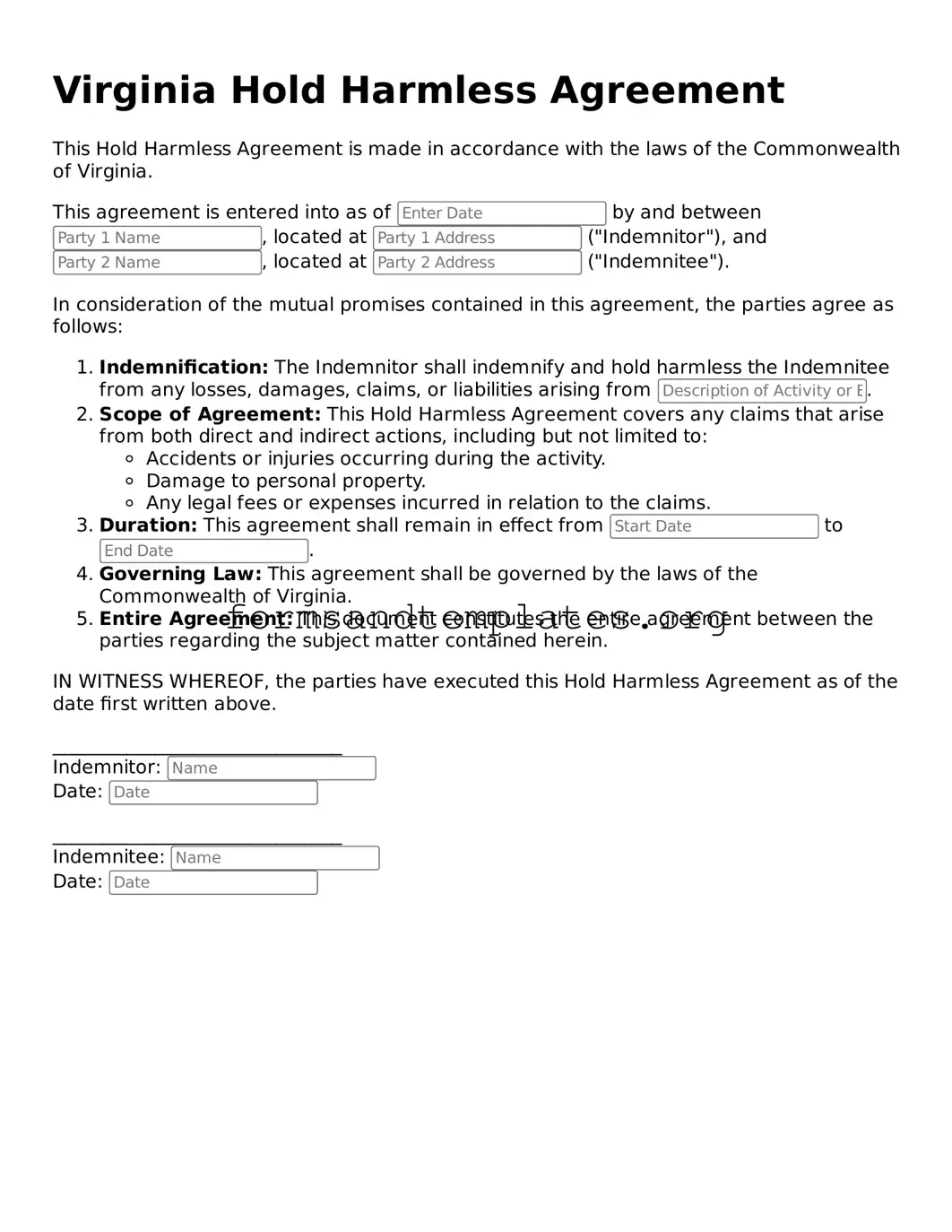What is a Virginia Hold Harmless Agreement?
A Virginia Hold Harmless Agreement is a legal document that protects one party from liability for any injuries or damages that may occur during a specific activity or event. It essentially states that one party agrees not to hold the other responsible for any potential losses or claims.
Who typically uses a Hold Harmless Agreement?
This agreement is commonly used by businesses, event organizers, and individuals who engage in activities that could pose risks. For example, venues hosting events, contractors working on construction sites, and recreational organizations often utilize this agreement to limit their liability.
What are the key components of the agreement?
A typical Hold Harmless Agreement includes:
-
The names of the parties involved.
-
A clear description of the activity or event.
-
A statement of indemnification, where one party agrees to protect the other from claims.
-
Signatures of both parties, indicating their consent to the terms.
Is a Hold Harmless Agreement legally binding in Virginia?
Yes, a Hold Harmless Agreement can be legally binding in Virginia, provided it is properly drafted and signed by both parties. However, certain conditions may affect its enforceability, such as public policy considerations or if the language is overly broad.
Can a Hold Harmless Agreement protect against gross negligence?
Generally, Hold Harmless Agreements cannot protect a party from liability for gross negligence or willful misconduct. Courts often do not enforce clauses that attempt to waive liability for serious misconduct, as this goes against public policy.
Do I need a lawyer to create a Hold Harmless Agreement?
While it is not strictly necessary to have a lawyer draft a Hold Harmless Agreement, it is highly recommended. A legal professional can ensure that the document is properly worded and complies with Virginia laws, reducing the risk of future disputes.
How do I enforce a Hold Harmless Agreement?
To enforce a Hold Harmless Agreement, the injured party must demonstrate that the agreement was valid and applicable to the situation. This often involves providing a copy of the signed agreement and showing that the incident falls within the scope of the agreement.
What should I do if someone refuses to sign the agreement?
If someone refuses to sign the Hold Harmless Agreement, consider discussing their concerns. They may have valid reasons for their hesitation. If the agreement is essential for the activity, you may need to assess the risks and decide whether to proceed without it or seek alternative arrangements.
Can I modify a Hold Harmless Agreement after it has been signed?
Modifying a Hold Harmless Agreement after it has been signed is possible, but both parties must agree to the changes. It is best to create a new document or an amendment that outlines the modifications and have both parties sign it to ensure clarity and enforceability.
